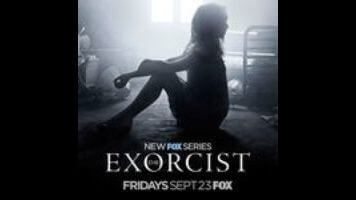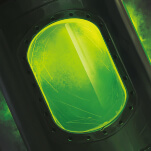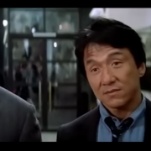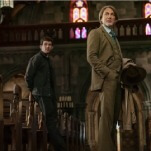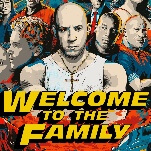In 1973, part of the beauty of the original Exorcist and the William Peter Blatty novel it was adapted from was a shared ambiguity. If you went into either work blind, you weren’t sure until halfway through the story if preteen Regan MacNeil was actually possessed by a demon or not. Unfortunately, that’s all but impossible in 2016, a time when there isn’t just one Exorcist book and movie, but a string of sequels, several parodies, a stage adaptation, and even two different versions of the same prequel.
And that’s to say nothing of the original’s worldwide fame. Even without all the subsequent entries, most folks gearing up to read or watch The Exorcist already understand that, no, Regan’s disturbing behavior isn’t just the product of fatherly neglect, abuse from elsewhere, or emotional trauma; the poor girl’s body has indisputably been taken over by a mythological, malevolent force called Pazuzu.
Even so, it’s understandable why the writers of Fox’s The Exorcist—as Katie Rife noted, not quite a sequel or a reboot, but a similar story that takes place in the franchise’s universe—decided to stick with the is-she-or-isn’t-she-a-demon conceit for the first two episodes and a good portion of the third. Like it or not, ambiguous horror is very in vogue right now. The Babadook presented the tangibility of its villain as being open for interpretation, and even a movie like It Follows—where the monster is indeed real—kept the rules open-ended enough to raise all sorts of questions about the origins of the antagonist. The Exorcist, on the other hand, has a run-of-the-mill demon, plain and simple.
But while keeping its existence a mystery probably looked like a good idea on paper for the TV series, it’s ended up being a hindrance. For one, it’s the goddamn Exorcist. Of course the demon is real. It’s been real in every other iteration of Blatty’s story. Why wouldn’t it be real here? Also, Father Marcus (Ben Daniels) has been shown trotting the globe and fighting actual demons from the get-go. Narratively, that’s rendered the “What’s wrong with Casey?” dialogue and the arguments between him, Father Tomas (Alfonso Herrera), and the other priests about the plausibility of demons boring and pointless. In direct contrast, Angela Rance (Geena Davis) has been too quick to believe in otherworldly evil, jumping straight to demonic possession as a means of explaining her daughter’s temperament.
Besides being confusing from a story standpoint, all of this hemming and hawing simply isn’t interesting in such an oft-told genre tale like The Exorcist. Regardless of the changed faces and updated Chicago setting, this is still a classic story that follows a tried and true formula: girl meets demon, girl gets possessed by demon, priests (and maybe family) have to fight demon. The quicker the show recognizes that, the better.
By the time we get to its gloriously squirmy finale, that’s just what “Let ‘Em In” has done. While there’s certainly a case to be made for the kind of shadowy, atmospheric ending of the pilot episode, there’s something as equally—if not more—chilling about Casey Rance (Hannah Kasulka) exhibiting her powers in such a public setting. While her father, Henry (Alan Ruck), has another mental short circuit and passes out on the CTA, she gets accosted and groped by an inebriated Cubs fan (Nate Santana). When the guy won’t back down, the demon inside her takes over. She twists the dude-bro’s genitals and pounces on him, gouging open his chest, then breaking his jaw as the train lights go emergency red and her eyes go hellbent black. Then, in a nice callback to the original novel and film, she urinates on the floor once the real Casey returns to the driver’s seat of her consciousness.
I’m sure several characters on the show will chalk up the attack to mental illness, but this all seems to be more or less a confirmation of supernatural forces at work. Granted, Casey had already encountered numerous out-of-the-ordinary symptoms, like vomiting up a ropy centipede in the second episode after ingesting holy water. But she was by herself in that scene, and, as we’ve been shown, she’s possibly prone to hallucinating. She could be an unreliable narrator.
Wisely, the show doesn’t keep actual possession and mental instability independent of one another, and that’s where The Exorcist has the potential to get really interesting. Did the trauma of what’s happened to Casey’s family—both her father’s scaffolding accident and her sister’s car wreck—put her in an emotional state that made her vulnerable to the demon? Or did the demon come first? In the opening flashback, Kat (Brianne Howey) swerves her vehicle to avoid hitting a man in the street, an ominous figure that seemingly comes out of nowhere, then disappears before she wakes up. Was it the demon already targeting the whole Rance clan? Are they all susceptible to possession? Was Pazuzu or whoever the entity might be already setting its masterplan into place? Was the car accident just the inciting incident for everything else?
By getting the confirmation of an actual demonic force out of the way, the series has more freedom to explore these questions. It has more freedom to focus on the metaphorical demons, not to mention the horrifying avenues where they might intersect with the literal ones. The bald salesman (Robert Emmet Lunney) seems to be an example of that. Even if he’s a visual manifestation of whoever has hijacked Casey’s soul, he still appears to be someone she knows or once knew in real life, a sexual and emotional abuser who’s now serving as her own private agent of chaos. There’s something about the way he leers at her and kisses her; something about the way she seems both repulsed and comforted by him that convinces me this isn’t just an especially dark imaginary friend. His half-scorched business suit also gives some insight to where this current version of him comes from.
The writers are smart to leave this unanswered, at least for the time being. Don’t get me wrong; the show’s by no means perfect—Chris MacNeil surrogate Angela still doesn’t have much to do yet besides act worried—but it appears that, after three episodes, The Exorcist is starting to answer the right questions while still leaving the most compelling ones shrouded in darkness. It’s starting to be strategic with its ambiguity.
Stray observations
- Welcome to reviews of The Exorcist. We’re off to a bit of a late start, but along with Katie’s pre-air coverage of the pilot, hopefully this feels like somewhat comprehensive coverage of the show so far (apologies to episode two).
- Between this and Easy, it’s been a banner year for television shows that get Chicago right. I appreciate that the South Side actually looks like the South Side and not, you know, Wicker Park.
- Speaking of Windy City accuracy, the Red Line really does get that bad right after a Cubs game. I’d be lying if I said it wasn’t cathartic to see a douchey, drunken fan get some comeuppance.
- The creepy bald guy reminds me of a theory concerning the original Exorcist—that Burke Dennings actually molested Regan, thus putting her in an emotionally vulnerable place that attracted the attention of Pazuzu. I never got the sense that Burke was supposed to be a sexual predator, plus I’m not sure how well that matches up with the timeline of Regan’s erratic behavior. Do any of you Exorcist fans out there have thoughts on that?
- “Are you asking if I’m a succulent?”
- “A surgeon loses his hands, you don’t give the scalpel to the man mopping the floor.”
